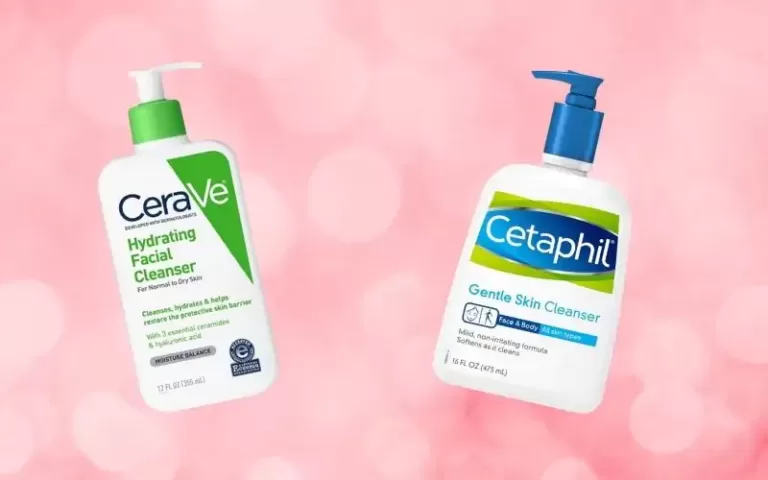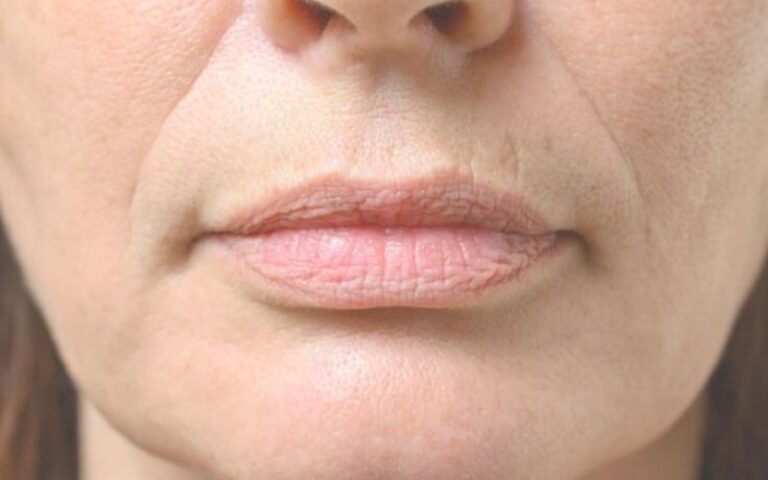Learn How To Get Your Skin Makeup-Ready

Your makeup will last longer if your skin has been properly primed. It also allows for a smoother canvas when applying foundation.
Before wearing makeup, follow your skincare routine to avoid uneven, patchy skin coverage that wears off too quickly. A well-prepared face before applying makeup helps the cosmetics last much longer than usual and makes the skin smooth for applying foundation.
To prepare your skin before wearing makeup, follow these step-by-step instructions.
Step 1: Cleansing
The primary step in any skincare routine before applying any makeup product is cleansing. It will remove all the dirt, grime, and impurities from the skin’s surface. Rinse your face with lukewarm water and a gentle cleanser suitable for your skin. You may also opt for double-cleansing if needed.
How To Choose A Cleanser?
Choosing a suitable cleanser for your skin type is the key. It can add more softness to your skin, ensure the makeup glides evenly, and stay throughout the day on your face.
- Dry Skin: Choose a cream cleanser that helps moisturize the skin while cleansing.
- Oily Skin: Go for a gel or foam cleanser that eliminates dirt and oil without irritating the skin.
- Combination Skin: Look for a cleanser specifically designed for combination skin since it comprises both oily and dry skin.
- Sensitive Skin: Seek gentle cleansers made from plant oils.
- Acne-Prone Skin: Choose a cleanser that contains benzoyl peroxide, salicylic acid, or tea tree oil to fight against bacteria and help keep acne at bay.
Step 2: Exfoliate
If you don’t want your makeup to look cakey, exfoliating your face is necessary after cleansing. Removing the dead skin cells will leave you with fresh, smooth skin.
Exfoliating can also aid in removing dry spots that may contribute to blotchiness or an uneven complexion. After washing your face, use your fingertips to gently rub the exfoliant product of your choice into your skin in circular motions. After that, wash your face with warm water.
How To Choose An Exfoliator?
- Dry Skin: Exfoliation is essential to maintain dry or flaky skin. Avoid using the mechanical exfoliation method on dry skin, which leads to microtears. Look for AHA-containing exfoliators.
- Sensitive Skin: Avoid scrubbing and mechanical exfoliation since it will irritate your skin and lead to redness. Use a gentle chemical exfoliator and apply it with a soft washcloth. You can try a salicylic acid peel for acne.
- Oily Skin: Manual exfoliation and brushing are perfect for oily skin due to the added layer of buildup on the skin’s surface.
- Normal Skin: You may exfoliate your face with any method of exfoliation. Chemical and manual exfoliation methods are safer options. Select a product that works best for your skin.
- Combination Skin: People with mixed skin types may require a mix of mechanical and chemical exfoliators. Using both methods, one after the other, may irritate your skin. Hence, give a few days’ gap between both methods.
Be Warned: Certain exfoliating formulas might be a little too abrasive for you, no matter your skin type. Therefore, perform a patch test to ensure you don’t experience a skin reaction.
Step 3: Toner or Serum
The most important phase in your regimen is moisturizing; thus, toner serves to calm and preserve the skin while assisting in its preparation. To use a toner, apply a cotton ball to a tiny amount of the product, and then gently swipe the cotton over your face and neck.
While serum works wonders for people with dry skin since it moisturizes the face, toner is helpful for people with severely oily skin.
How To Choose A Serum?
Select a serum with Vitamin C for skin smoothness, sodium hyaluronate to seal your skin’s moisture, and herbs that moisturize the skin and delay aging.
Step 4: Eye Cream
Your eye cream should be thin, much like serums. Your eyes will appear more open if you moisturize and even out the skin tone surrounding them. Using your eye cream correctly to counterbalance uneven skin tone is best because the skin around your eyes is delicate and sensitive.
Step 5: Moisturize
Moisturizers nurture your skin and enhance the appearance of your makeup products. It brightens and softens your skin, making the foundation and concealer application more straightforward. It extends the longevity of makeup as well.
How To Choose A Moisturizer?
- Oily Skin: The best moisturizer for oily type of skin is a water-based, oil-free moisturizer, like a gel moisturizer with no oil.
- Dry Skin: A cream moisturizer will be best for dryness. The thick texture will be relatively heavy on dry skin and take longer to dry. A cream moisturizer contains oil-based ingredients (water to draw in moisture and oil to retain moisture).
- Combination Skin: Use a cream moisturizer, a thicker one on the dry side. Use a gel or gel cream/water cream for oily patches.
- Sensitive Skin: Avoid moisturizers with fragrances, parabens, and other irritants.
Step 6: Primer
Primer application might be the most important step in creating all-day makeup. Thanks to primer, your foundation, blush, bronzer, and other facial cosmetics last longer when applied to a smooth, even canvas.
How To Choose A Primer?
There isn’t a primer formula that works for every skin type and every situation. Finding a primer made especially for your skin type and concerns is essential if you want your makeup to endure from morning to evening.
Choose a primer that will assist you in achieving your desired final appearance, whether you’re striving for a dewy or matte finish (use non-silicone-based primers). Consider using a mattifying primer to help keep your skin from being shiny or oily during the day if you have skin that tends to become oily after a few hours. If you have dry skin, choose a moisturizing primer to help you achieve a radiant, long-lasting finish.
Step 7: Exfoliate and Hydrate Lips
Applying lipstick without proper lip care may make your lips flaky, uneven, or patchy. First, exfoliate your lips and moisturize them with a lip balm or primer. Give some time for lip balm to soak in. It will help your lips to moisten and create a perfect canvas for the lipstick to stay all day.
You can also use a color-correcting concealer to hide dark, pink, or red color lip acne.
To Summarize
To keep your makeup flawless, follow these instructions and properly prepare your face.
Now that you know how to prepare your skin and face for makeup, you may put your brand-new regimen to the test.
Remember, achieving a perfect makeup look takes time and practice.
FAQs
Q: What is the purpose of a primer in skin prep?
A: Wearing primer under the foundation is essential in skin prep, especially for dry skin. It helps makeup stay in place by creating a smooth canvas for your makeup application.
Q: Which is the correct method to put foundation: fingers or a brush?
A: You can’t predict the correct way here. Both techniques have their unique touch and perks. It depends on how effectively you do it.
Q: Does the concealer’s role come before or after the foundation?
A: First, smooth your skin with a foundation to create an even canva, and then apply your concealer. They correct the outstanding areas that need extra coverage.
References
- How To Prep Your Skin Before Applying Makeup: https://www.bebeautiful.in/all-things-skin/occasion/prep-your-skin-before-applying-makeup
- How To Prep Your Skin For All Day Makeup: https://www.anastasiabeverlyhills.com/the-arch/?bcid=how-to-prep-your-skin-for-all-day-makeup
- Must-Dos To Follow Before Applying Makeup: https://www.urbancompany.com/blog/beauty/steps-before-applying-makeup/
- How to Prepare Your Face Before Applying Makeup: https://www.wikihow.com/Prepare-Your-Face-Before-Applying-Makeup
- Top dermatologist recommends 7 must-do things before you put on makeup: https://www.healthshots.com/beauty/skin-care/7-must-do-things-before-you-put-on-make-up/





